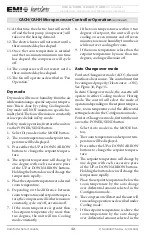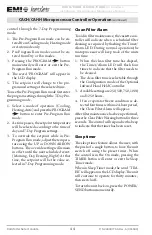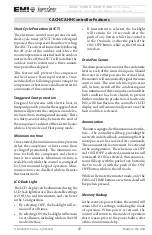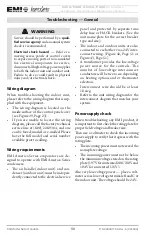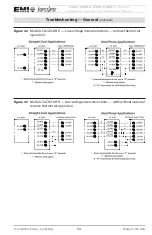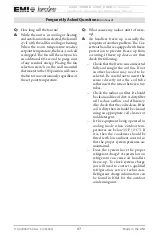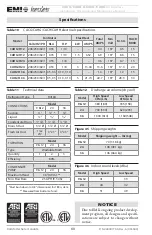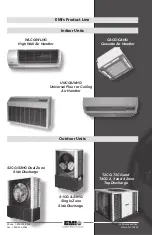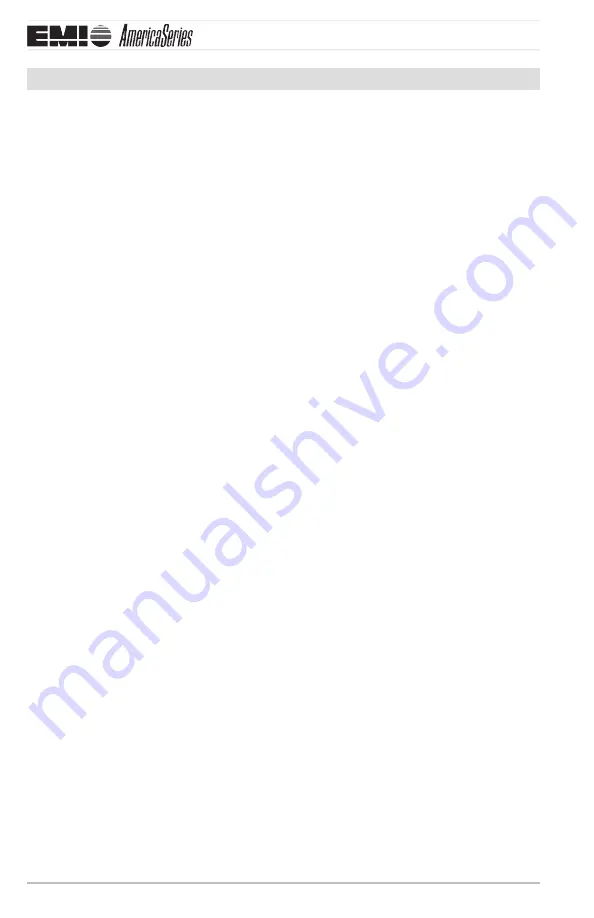
CACG/CAHG & CACH/CAHH
Air Handlers
• Installation, Operation and Maintenance Manual •
Comfort where it counts
56
P/N 240007756, Rev. A [051509]
Q:
The system has just been installed us-
ing an EMI indoor unit and a non-EMI
condenser. There is no display and the
unit will not operate.
A:
EMI air handlers are manufactured with a
low-voltage transformer installed. When
connecting an EMI evaporator to a non-
EMI condenser, check to ensure that
there is no 24v control transformer in
the outdoor unit. Only one transformer
is required. If both the indoor unit and
outdoor unit contain a transformer, one
must be removed from the system.
Q:
The system has just been installed using
an EMI indoor unit and a non-EMI con-
denser and the unit will not operate.
A:
The Cassette air handler is manufactured
with a low Volt transformer installed.
EMI outdoor condensers are manufac-
tured without a low Volt transformer.
When connecting an EMI air handlers
to a non-EMI condenser, check to ensure
that there is a 24V control transformer in
either in the indoor unit or outdoor unit.
Only one transformer is required. If both
the indoor unit and outdoor unit contain
a transformer, one must be removed
from the system.
Q:
The condenser will not start although
the indoor unit appears normal. What
should I do?
A:
At the indoor thermostat, make sure that
the control is in cooling and the setpoint
temperature is below room temperature.
Next, using a Voltmeter, check for 24V
across the yellow (Y) and brown (C)
wires. If 24V is present then check for
wiring breaks or improper connections
between the indoor and outdoor units.
A:
Some EMI condensers are equipped with
a manual reset high-pressure switch. It
is located on the high side of the system
usually on the discharge line of the com-
pressor. To reset, push the red button in.
If the switch was tripped there will be a
click when it resets.
A:
The cassette air handlers are equipped
with an internal condensate pump with a
high level safety switch. If the condensate
reaches a critical level or if power is lost
to the indoor unit, the safety circuit will
open and low Volt power to the con-
denser (terminal “Y1”) will be removed.
The condensate pump should be checked
for obstruction. The condensate pump
assembly can be removed through the
side access panel. After removal, inspect
the drain pan to determine if the con-
densate is not being removed properly
from the unit. Inspect all drain lines to
ensure there is no blockage preventing
condensate removal.
Frequently Asked Questions

